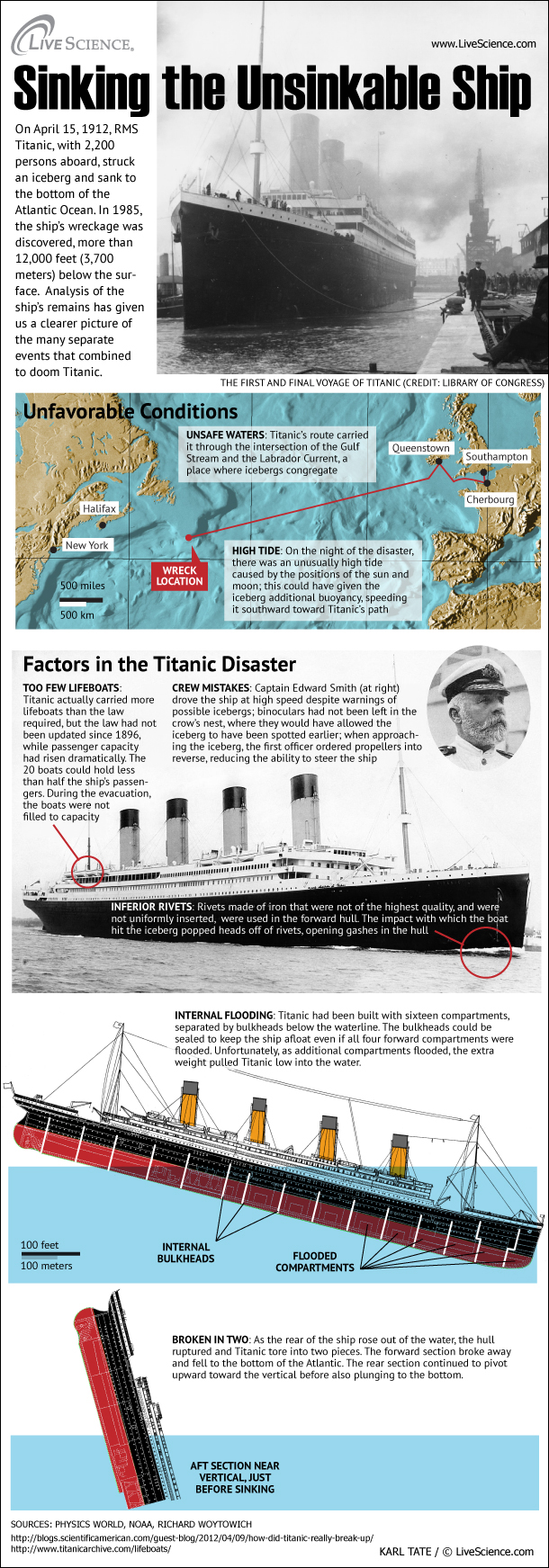Why and How the Titanic Sank (Infographic)

On April 15, 1912, RMS Titanic, with 2,200 persons aboard, struck an iceberg and sank to the bottom of the Atlantic Ocean. In 1985, the ship’s wreckage was discovered, more than 12,000 feet (3,700 meters) below the surface. Analysis of the ship’s remains has given us a clearer picture of the many separate events that combined to doom Titanic.
Titanic’s route carried it through the intersection of the Gulf Stream and the Labrador Current, a place where icebergs congregate.
On the night of the disaster, there was an unusually high tide caused by the positions of the sun and moon; this could have given the iceberg additional buoyancy, speeding it southward toward Titanic’s path.
Titanic actually carried more lifeboats than the law required, but the law had not been updated since 1896, while passenger capacity had risen dramatically. The 20 boats could hold less than half the ship’s passengers. During the evacuation, the boats were not filled to capacity.
Captain Edward Smith drove the ship at high speed despite warnings of possible icebergs. Binoculars had not been left in the crow’s nest, where they would have allowed the iceberg to have been spotted earlier. When approaching the iceberg, the first officer ordered propellers into reverse, reducing the ability to steer the ship.
Rivets made of iron that were not of the highest quality, and were not uniformly inserted, were used in the forward hull. The impact with which the boat hit the iceberg popped heads off of rivets, opening gashes in the hull.
Titanic had been built with sixteen compartments, separated by bulkheads below the waterline. The bulkheads could be sealed to keep the ship afloat even if all four forward compartments were flooded. Unfortunately, as additional compartments flooded, the extra weight pulled Titanic low into the water.
As the rear of the ship rose out of the water, the hull ruptured and Titanic tore into two pieces. The forward section broke away and fell to the bottom of the Atlantic. The rear section continued to pivot upward toward the vertical before also plunging to the bottom.
Sign up for the Live Science daily newsletter now
Get the world’s most fascinating discoveries delivered straight to your inbox.

